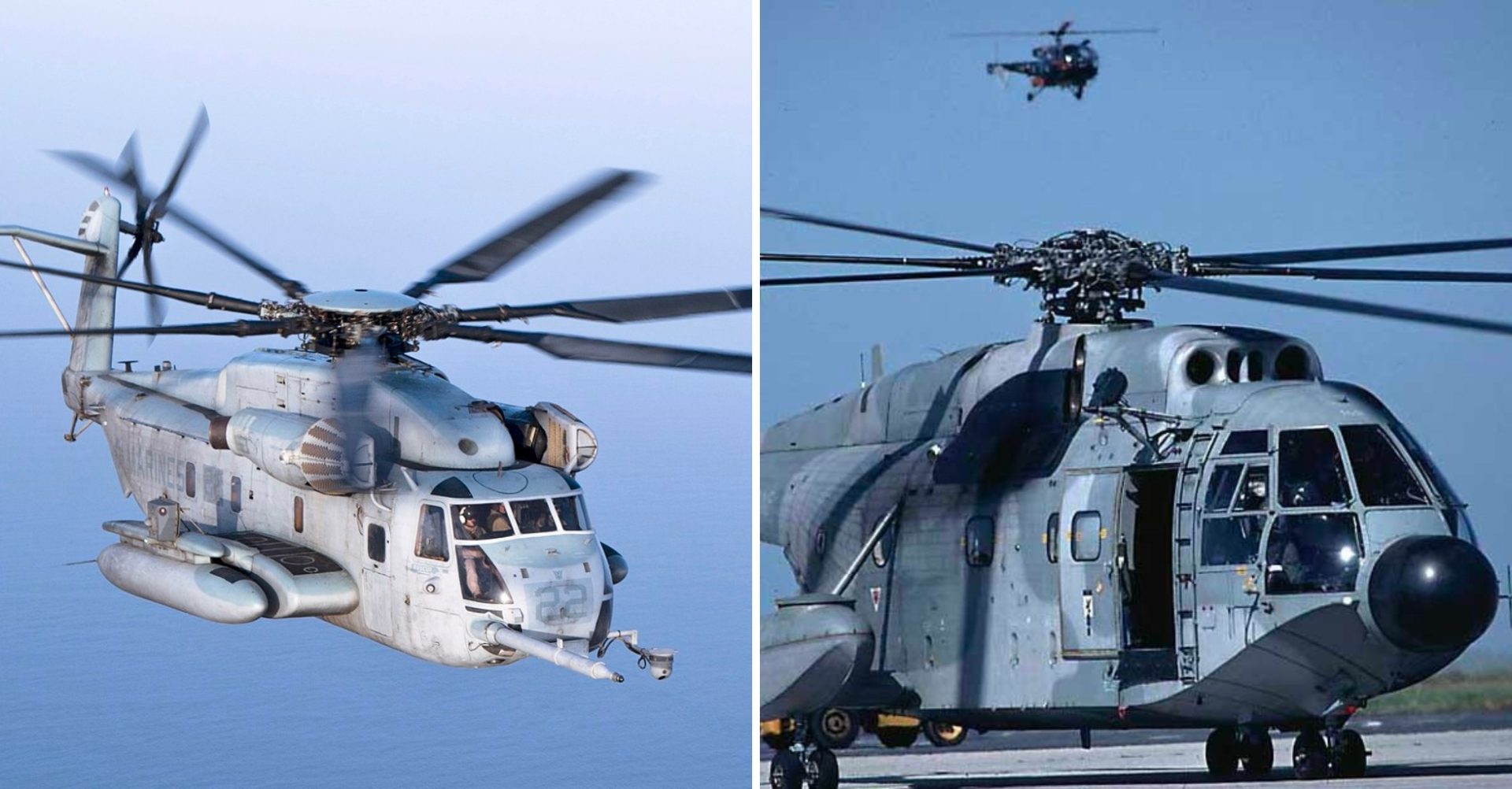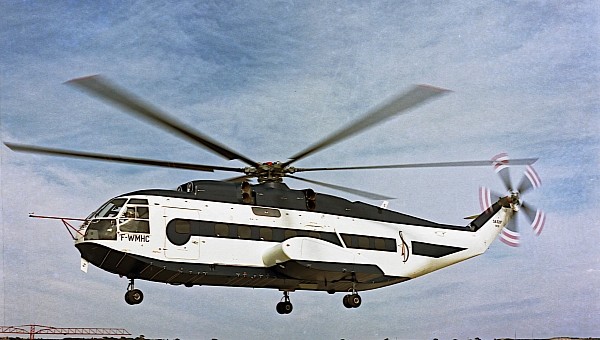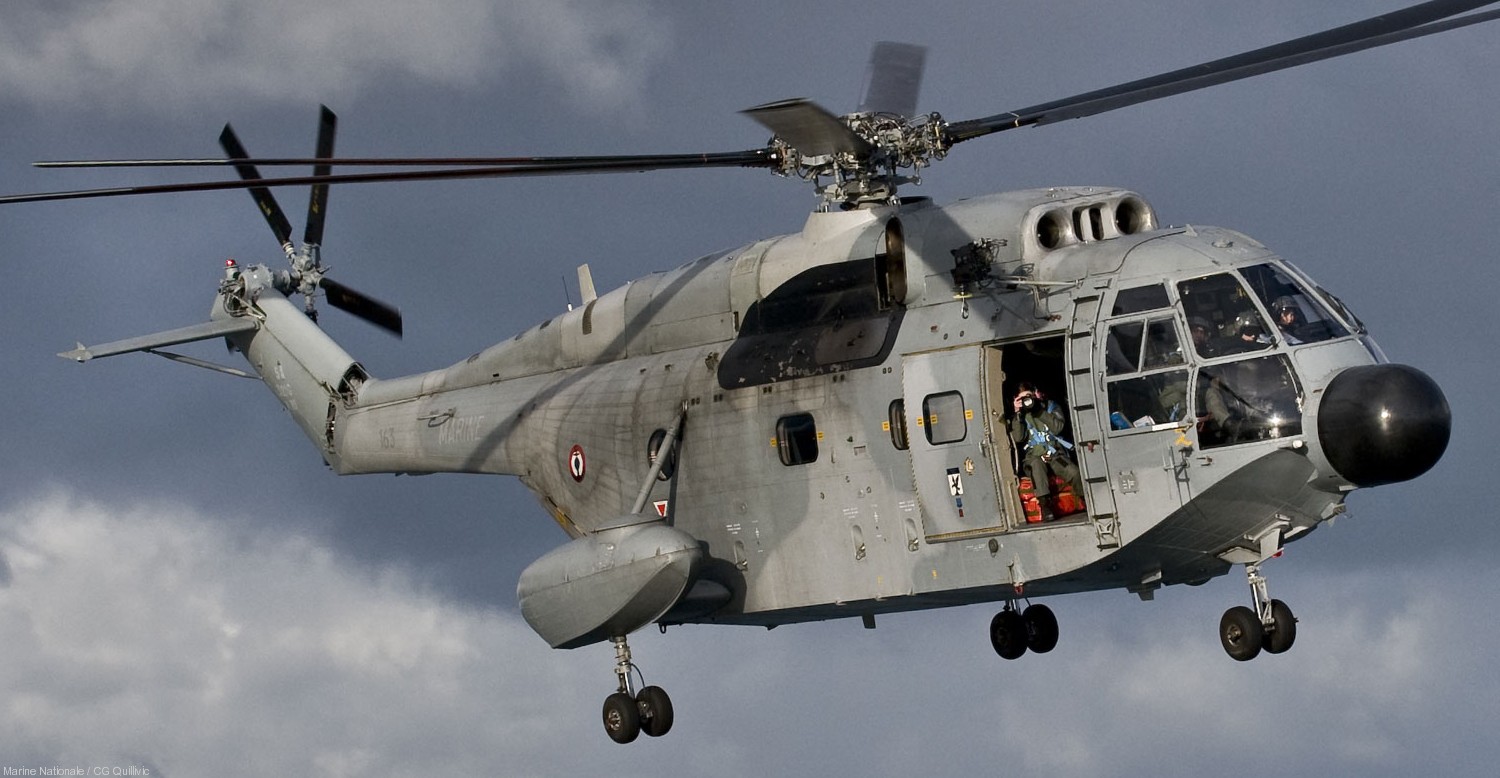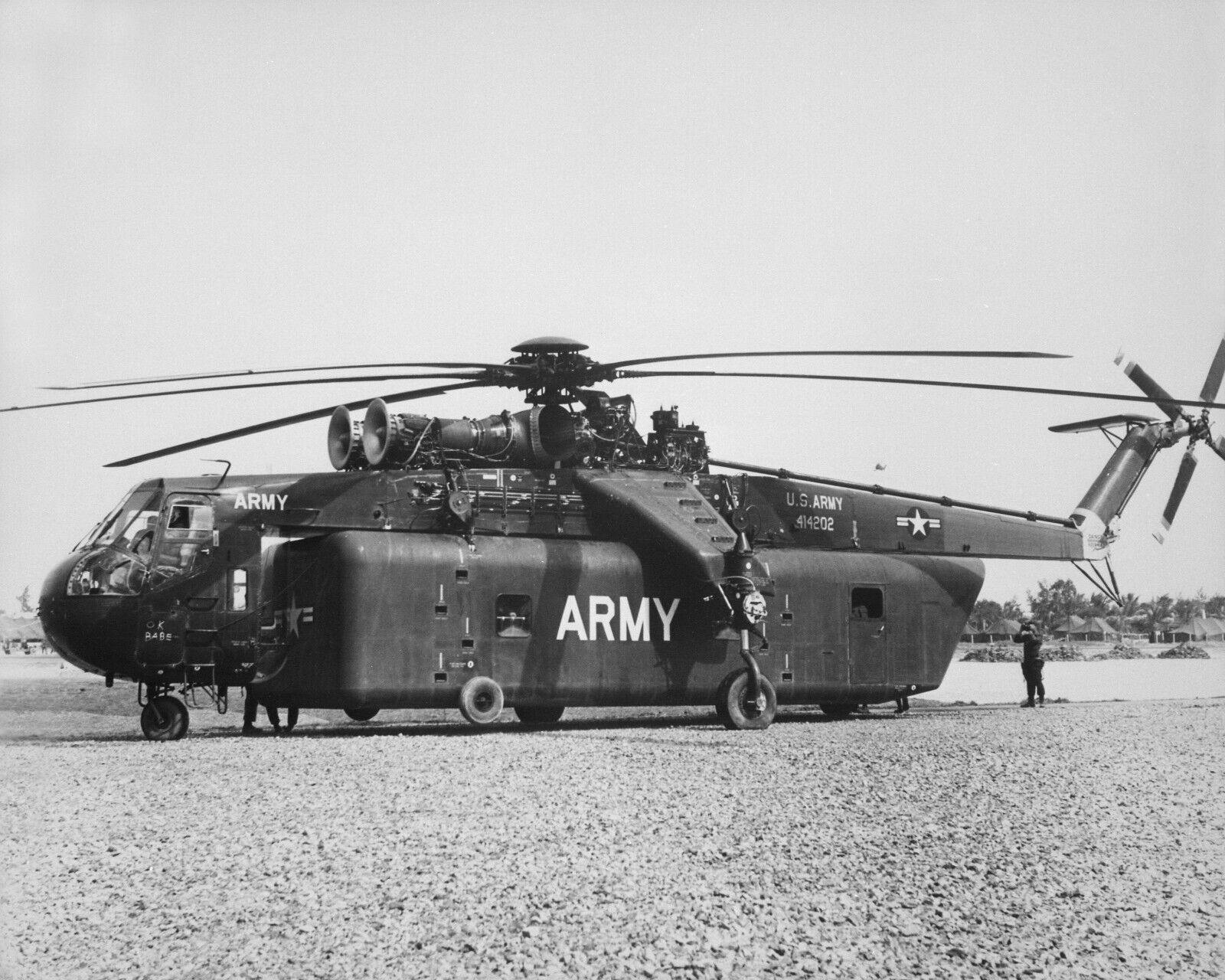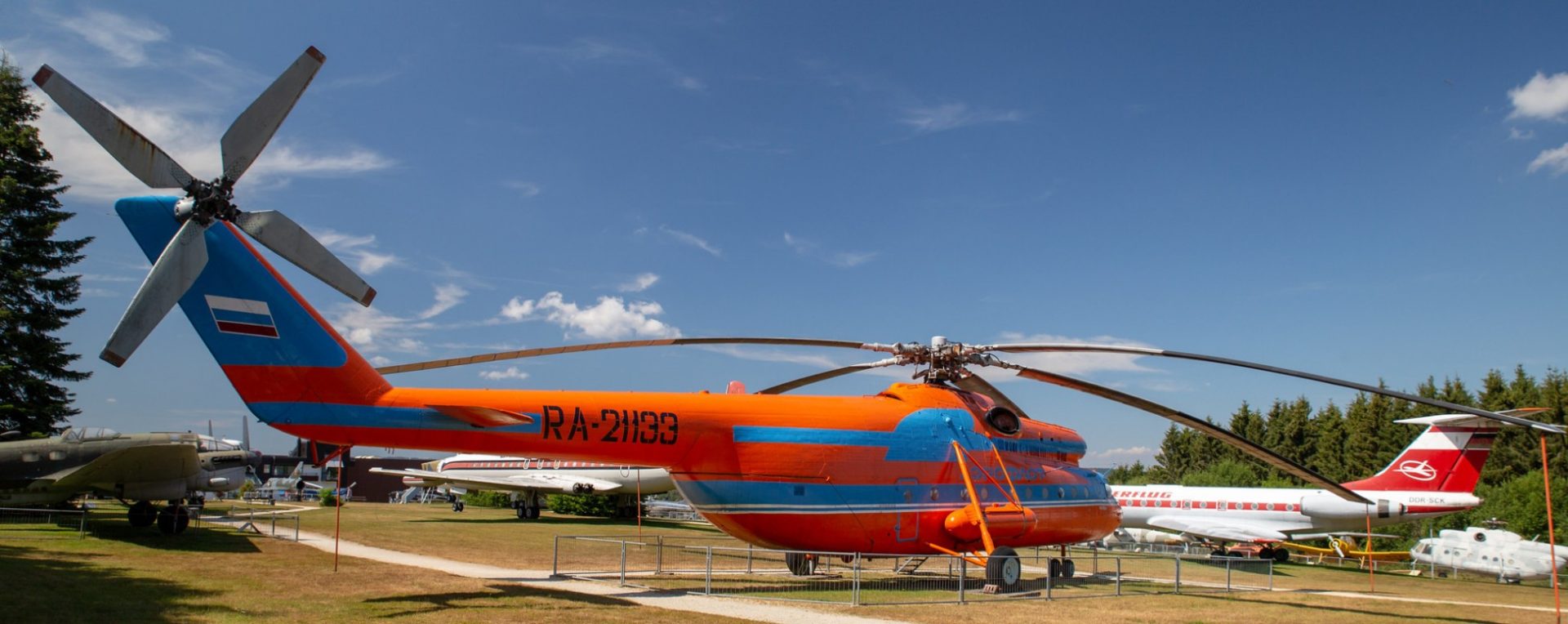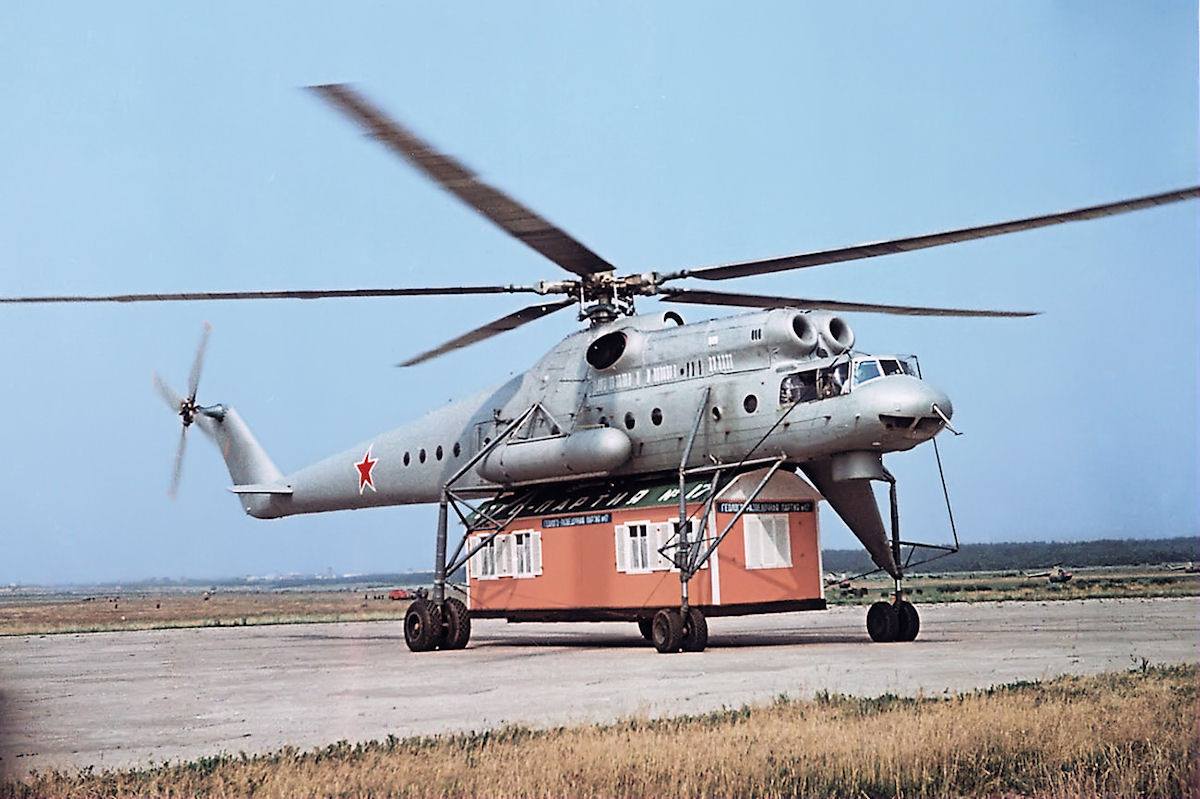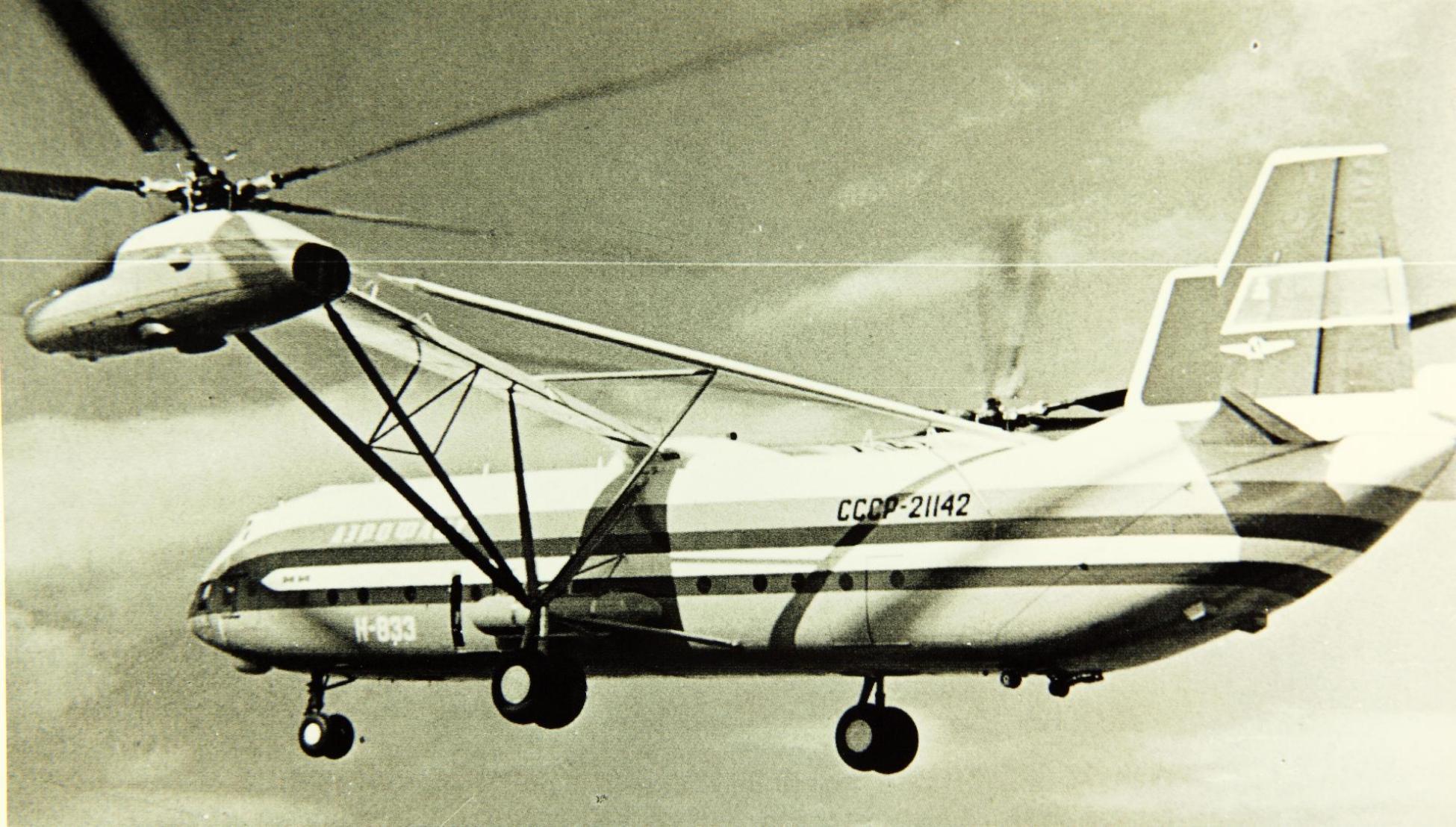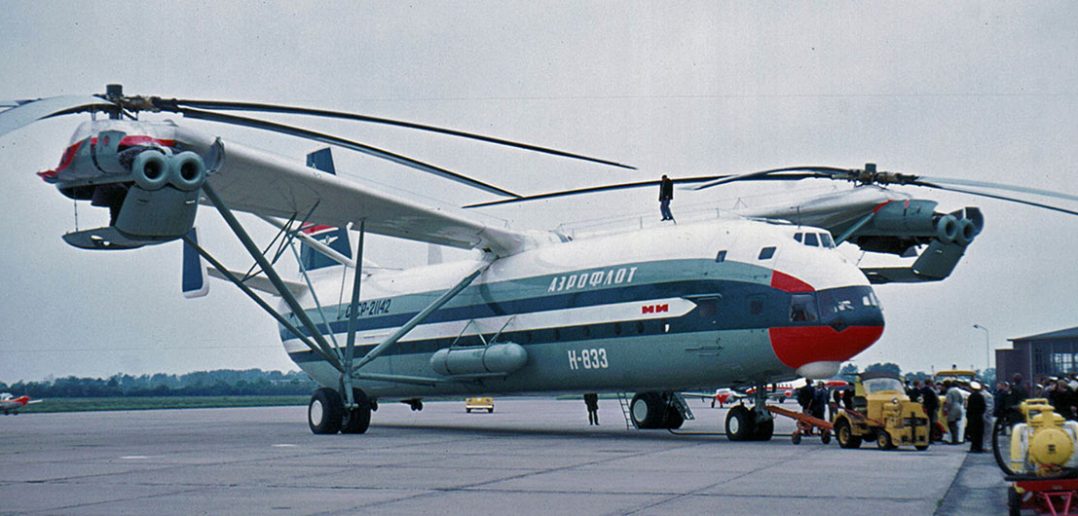The World’s Largest Transport Helicopters
Table Of Contents
History has repeatedly shown that significant advancements in both medical and technological fields have often emerged during times of conflict, especially in relation to wartime situations.
Consider, for example, the development of jet fighters and medicine, to name just a few. The need for large aerial transporters also arose during a different type of war, the Cold War.
At the onset of the Cold War, in the Soviet Union, the Red Army approached aviation bureaus to create a heavy lifter. They required a vehicle capable of swiftly transporting troops and substantial loads to combat zones. The Mil OKB (Opytnoe Konstructorskoe Byuro), an Experimental Design Bureau in Russian, came up with an unusual rotorcraft solution. This aircraft could lift up to 6 tonnes and met the Soviet commanders’ requirements. The project received the green light on June 1st, 1955, and the final product was named the Mi-6. In just two years, on June 5th, 1957, the first production model took off. It marked the debut of the first turboshaft-powered helicopter developed in the Soviet Union. Consequently, a competition to produce bigger, more powerful rotorcraft began, and Western Allies entered the fray.
So, here’s a list of the most powerful rotorcraft created by aviation pioneers in their quest to develop aircraft capable of taking off with a maximum weight of at least 10,000 kilograms (22,046 pounds).
1. Boeing Vertol CH-46 Sea Knight
Boeing was the first to respond when the U.S. Marine Corps requested a medium assault helicopter in 1961. In 1964, the first twin-turbine tandem-rotor CH-46A Sea Knight took flight and entered service a year later in Vietnam. Its primary role was to transport troops and materials, supporting the U.S. Army.
Thanks to its tandem-rotor system, the Sea Knight, also known as the “Phrog,” proved its worth in adverse weather conditions. It could withstand crosswinds and land on moving ships. It was powered by a pair of General Electric T58-GE-16 turboshafts producing 1,879 shaft horsepower (shp). With a length of 45 feet (13.92 meters) and lifted by two 51-foot (16 meters) diameter rotors, it had a maximum takeoff weight of 24,300 pounds (11,000 kg). While it ranks at the bottom of our list in terms of weight capacity, its capabilities and long history are noteworthy.
2. Aérospatiale SA 321 Super Frelon
Sud Aviation was a significant helicopter manufacturer in Europe, responsible for many outstanding successes. In our list, we highlight the SA 321 Super Frelon (Hornet in French).
On December 7th, 1962, the substantial French Hornet took its maiden flight powered by three Turbomeca IIIC Turboshafts, each producing 1,550 shp. The production version entered service in 1966, setting a world speed record for helicopters in July 1963 when a modified version reached 217.7 mph (350.4 kph). Keep in mind that this was a transport helicopter, making it comparable to the fastest semi-truck on the road. Moreover, this 76-foot (23.03 meters) long aircraft with a 62-foot (18.9 meters) rotor diameter could land on water and was produced in over 100 units, even under license in China.
3. Sikorsky CH-54 Tarhe
American helicopter manufacturer Sikorsky was not far behind, and on May 9th, 1962, the CH-54 Tarhe made its maiden flight. The name “Tarhe” is derived from an Indian chief known as “The Crane.” Just like its namesake, the CH-54 was designed to be a sky-crane. It was primarily used as a recovery helicopter but could also carry a large 15,000-pound (6,800 kg) bomb. Additionally, it proved useful in delivering command posts, army hospitals, and barracks to the front lines.
The CH-54 Tarhe was powered by a pair of Pratt & Whitney T73-P-700 turboshaft engines, each delivering an astonishing 4,800 shp. This giant helicopter measured 88.6 feet (27 meters) in length, with a main rotor spanning 72 feet (22 meters) in diameter. With a maximum takeoff weight of 47,000 pounds (21,000 kg), it earns its place on our list.
4. Boeing CH-47 Chinook
In the aviation world, the Chinook is as iconic as the Wrangler is in the off-road vehicle communities. Its tandem rotors may resemble those of the CH-46 Sea Knight, just as the various generations of Wranglers may confuse some. Nevertheless, the Chinook is highly popular and versatile, serving multiple purposes, from heavy-lift transportation to troop transport and disaster relief, search and rescue, firefighting, and heavy construction.
While the Navy needed a medium-sized chopper, the Army sought a heavier transport aircraft. Thus, the first Chinook took to the skies in September 1961 and entered service the following year. The CH-47A Chinook, the first of its kind, had its maiden flight in August 1962. With a maximum takeoff weight of 33,000 pounds (14,969 kg) and a payload of 10,000 pounds, it rightfully deserves its place on our list.
However, let’s discuss the D version, which, at the time of its launch, was the weightlifter of the family. It could carry up to 26,000 pounds (12,000 kg) hung under its belly and had a maximum takeoff weight of 50,000 pounds (22,680 kilograms). The triple-hook system was crucial for payload stability, enabling it to carry 155mm howitzers at speeds of up to 161 mph (260 kph). This was not a small aircraft either, measuring 98.10 feet (30.1 meters) in length, with rotors spanning 60 feet (18.3 meters) in diameter. The CH-47D was powered by two Lycoming T55-GA-712 turboshafts, each outputting 3,750 shp.
5. Bell Boeing V-22 Osprey
The Bell Boeing V-22 Osprey isn’t precisely a helicopter, as it takes off and lands like one but travels like an airplane, thanks to its engine nacelles that convert it into a turboprop high-speed, high-altitude aircraft. According to Bell Boeing, the Osprey can carry 24 combat troops or up to 20,000 pounds (9,072 kilograms) of internal cargo or 15,000 pounds (6,804 kilograms) of external cargo, all while flying at twice the speed of a regular helicopter. It features a cross-coupled drive system, allowing either engine to power the rotors if one engine fails.
For shipboard compatibility, the rotors fold, and the wing rotates to minimize the aircraft’s footprint for storage. The V-22 tiltrotor aircraft is the only vertical lift platform capable of rapid self-deployment to any theater of operation worldwide. The Osprey is powered by two Rolls-Royce T406-AD-400 turboprop/turboshaft engines, each delivering a whopping output of 6,150 hp. Its rotors have a 38-foot (11.6 meters) diameter, and the aircraft’s total length measures 57.14 feet (17.5 meters). With a maximum takeoff weight of 60,500 pounds (27,400 kg), the tiltrotor aircraft secures its spot on our list, capable of lifting up to 20,000 pounds (9,070 kg) of internal cargo or up to 15,000 pounds (6,800 kg) of external cargo.
6. Sikorsky CH-53E Super Stallion
Based on the CH-53 Sea Stallion, the Super Stallion currently stands as the largest and heaviest chopper in the U.S. military inventory. With an internal payload capacity of 30,000 pounds (13,600 kg) and an external payload of 32,000 pounds (14,500 kg), the Sikorsky CH-53E Super Stallion is the only helicopter capable of lifting a 155mm howitzer complete with crew and ammo. Additionally, it can lift an aircraft as heavy as itself.
Powered by three General Electric T64-GE-416/416A turboshafts, each rated at 4,380 shp, with a length of 99 feet and 1/2 inch (30.2 meters) and a rotor diameter of 79 feet (24 meters), the “Hurricane Maker” (a nickname derived from the downwash it generates) boasts a maximum takeoff weight of 73,500 pounds (33,300 kg).
7. Mil Mi-6
The helicopter that initiated this heavyweight lifting competition finds its place in fourth position, even though it was designed in the late 1950s. With the NATO codename “Hook,” the Mi-6 is said to have entered production in 1960, with approximately 860 units built until 1981. When it first flew, the Mi-6 was the world’s largest operational helicopter and the USSR’s first turboshaft helicopter. Furthermore, the Mi-6 won the Sikorsky trophy in 1961 for being the first helicopter to exceed 186 mph or 300 kph in level flight.
Powered by two Soloviev D-25V turboshafts with a combined output of 11,000 shp, a staggering rotor diameter of 114 feet and 10 inches (35 meters), and a length of 108 feet and 10 inches (33.18 meters), the Mi-6 possessed a maximum takeoff weight of 93,700 pounds (42,500 kg) and an internal cargo capacity of 26,400 pounds (12,000 kg) of internal cargo. It could carry up to 90 passengers or 70 fully-equipped airborne troops.
8. Mil Mi-10
Developed in 1962 and based on the Mi-6, the Mil Mi-10 has a maximum takeoff weight of 96,340 pounds (43,700 kg). While its maximum takeoff weight isn’t significantly different from its predecessor, the “Harke” (NATO codename), it can carry a payload on the platform of up to 33,070 pounds (15,000 kg) or a maximum slung payload of 17,635 pounds (8,000 kg).
As noted, the Mi-6 and Mi-10 shared the same engines, transmission, hydraulic system, and rotor system, but the latter featured a cut-down fuselage primarily designed for passenger accommodation and lacked the necessary internal clearance or large loading doors for bulky loads. The Mi-10 was equipped with large external fuel tanks and wide-track, four-legged, extended landing gear to allow the big helicopter to straddle bulky cargoes.
9. Mil Mi-26
Although not the largest helicopter in history, the Mi-26 (NATO codenamed “Halo”) stands as the largest and most powerful rotorcraft ever to reach the assembly line. Introduced in 1983 and still in production, the Mi-26 is powered by two Lotarev D-136 turboshafts with a combined output of 22,480 shp and has a maximum takeoff weight of 123,500 pounds (56,000 kilograms). It can transport payloads of up to 44,000 pounds (20,000 kg) for distances of up to 497 miles (800 kilometers).
The Mi-26 features a standard crew of four, including a pilot, copilot, navigator, and flight engineer. The cockpit has bulging side windows to improve visibility, and three video cameras are fitted to monitor the load during flight. While the cockpit is pressurized, the cargo bay is not.
10. Mil Mi-12
Finally, we reach the top of our list, featuring the world’s largest helicopter, a record held by the Russians with this unconventional flying contraption.
Although the Mi-12 never made it to production, two prototypes were built. The first flight took place in 1968, making its public debut in 1971 at the Paris Air Show. Codenamed “Homer,” the Mi-12 utilized a side-by-side rotor scheme, with each rotor powered by a pair of Soloviev D-25VF turboshafts, each producing 5,500 shp, for a total output of 22,000 shp.
With a length of 121 feet and 4 inches (37 meters) and a rotor diameter of 114 feet and 10 inches (35 meters), the Mi-12 had a maximum takeoff weight of 231,500 pounds (105,000 kg) and holds the payload record with 88,636 pounds (44,205 kg).
Hits: 23
